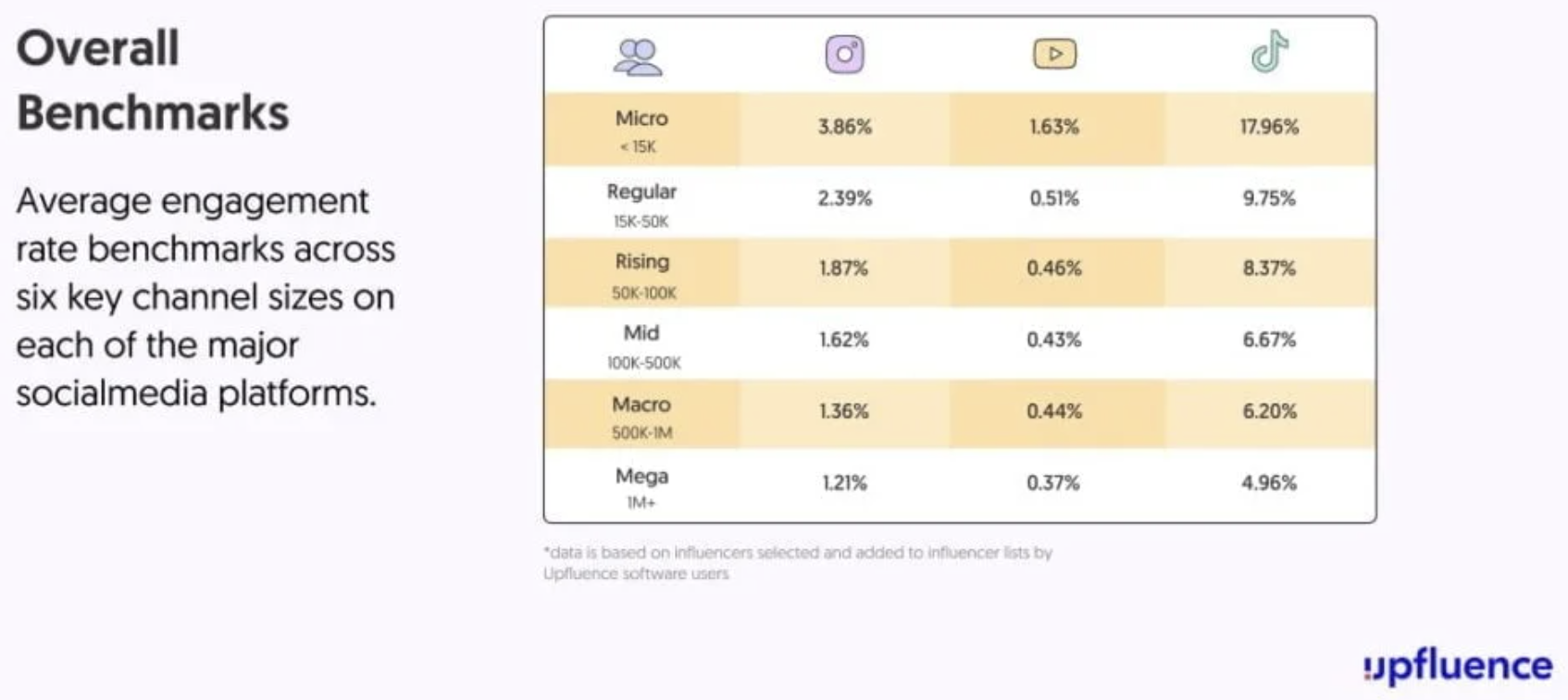All Posts
Engagement vs Follower Size
Engagement rate, rather than follower count, is a more reliable indicator of a creator's influence. Nano and micro-influencers often have higher engagement, suggesting brands should prioritize engagement over follower numbers.
January 26, 2024

Warning: Hot Take
Follower count doesn’t always mean sales. Despite partnering with creators that tout a massive following, brands may not see the conversions, revenue, or leads they were hoping for when they wrote the (expensive) sponsorship check.
The latest benchmark reports confirm the surprising trend: there isn't always a positive correlation between follower count and sales. A creator with a massive following may not deliver the expected conversions if their content lacks authenticity or relevance to their audience. For those who are just getting started, nano influencers actually have the highest engagement out of any tier, proving everyone has the ability to "influence".
Quality > Quantity
Engagement rate, on the other hand, is a more reliable indicator of a creator's ability to influence their audience. Our findings show that nano and micro-influencers (those with less than 60,000 followers) consistently achieve the highest engagement across all platforms. This suggests that brands should prioritize engagement rate over sheer follower numbers when building relationships with creators. A good engagement rate varies by platform and industry, but generally, rates between 1-3% are considered average, while rates above 3% are seen as high.
When collaborating with brands, highlight your engagement rate as a key metric that indicates your content's effectiveness in reaching and resonating with your audience. Emphasize how a high engagement rate is more indicative of potential campaign success than just follower count. Showcase past examples where your engagement rate positively influenced campaign outcomes as this strategy is shown to help creators land higher rates for their services! |
David Defeats Goliath
David defeated Goliath because his “aim was true” and if there is any lesson here for marketers, it’s that their truth is their authenticity. Authenticity leads to engagement, and engagement leads to performance. Engagement signifies a creator's ability to connect genuinely with their audience. When content resonates, it sparks conversations, shares, and, most importantly, trust. This trust is what ultimately drives conversions and brand loyalty.
For a few best practices to keep in mind when it comes to driving engagement:
Tactical Edits: Starting with compelling hooks, fast cuts, and ending the video right when the content finishes so the algorithm sees a higher completion rate. Create Authentic, Relatable Content: Audiences engage more with content that feels genuine and reflects their interests and values. Encourage Interaction: Ask questions, run polls, or initiate challenges to prompt your audience to engage. Consistent Posting: Maintain a regular posting schedule to keep your audience engaged and looking forward to your content. Use Visuals Effectively: High-quality images, videos, and infographics can boost engagement by making content more appealing. Respond to Comments and Messages: Interacting with your audience builds community and encourages more engagement. Audio: Sound quality or trending audio/songs can help keep your listeners engaged (trending tracks can help boost your content in explore page too). In summary, engagement rate, rather than follower count, is a more reliable indicator of a creator's influence. Nano and micro-influencers often have higher engagement, and we suggest that brands should prioritize engagement over follower numbers. For our fellow creators - authenticity, consistent posting, and audience interaction are key to driving engagement, performance, and ultimately, brand collaboration demand. |